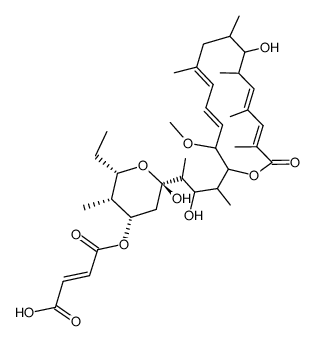| In Vitro |
Hygrolidin (0.1, 1 μg/ml; for 24 h) increases both G1 and S phase populations and decreases M phase population[1]. Hygrolidin (0.1, 1, 10 μg/ml; for 24 h) decreases the amounts of cdk4, cyclin D, cyclin B and increases the amounts of cyclin E and p21. Hygrolidin-induced p21 preferentially associates with cyclin A-cdk2 complex and inhibits it[1]. Hygrolidin (0.1, 1 μg/ml; for 24 h) selectively induces p21 in DLD-1 cells at mRNA level, but not in WI-38 fibroblasts[1]. Hygrolidin, for 3 days, inhibits growth of various cell lines including DLD-1 colon cancer, LNCaP prostate cancer, K562 leukemia cells, LNCaP prostate cancer, EL-4 lymphoma (IC50s = 1.0-33 ng/ml, respectively)[1]. Hygrolidin shows growth inhibition on Trypanosoma cruzi (IC50=1.1 nM), Trypanosoma brucei brucei (IC50=77 nM), and Leishmania donovani (IC50=72.5 nM)[3]. Cell Cycle Analysis[1] Cell Line: DLD-1 cells Concentration: 0.1, 1 μg/ml Incubation Time: For 24 hours Result: Increased both G1 and S phase populations and decreased M phase population. Western Blot Analysis[1] Cell Line: DLD-1 cells Concentration: 0.1, 1, 10 μg/ml Incubation Time: For 24 hours Result: Decreased the amounts of cdk4, cyclin D, cyclin B and increased the amounts of cyclin E and p21. RT-PCR[1] Cell Line: DLD-1 or WI-38 cells Concentration: 0.1, 1 μg/ml Incubation Time: For 24 hours Result: Selectively induced p21 in DLD-1 cells at mRNA level, but not in WI-38 fibroblasts.
|
